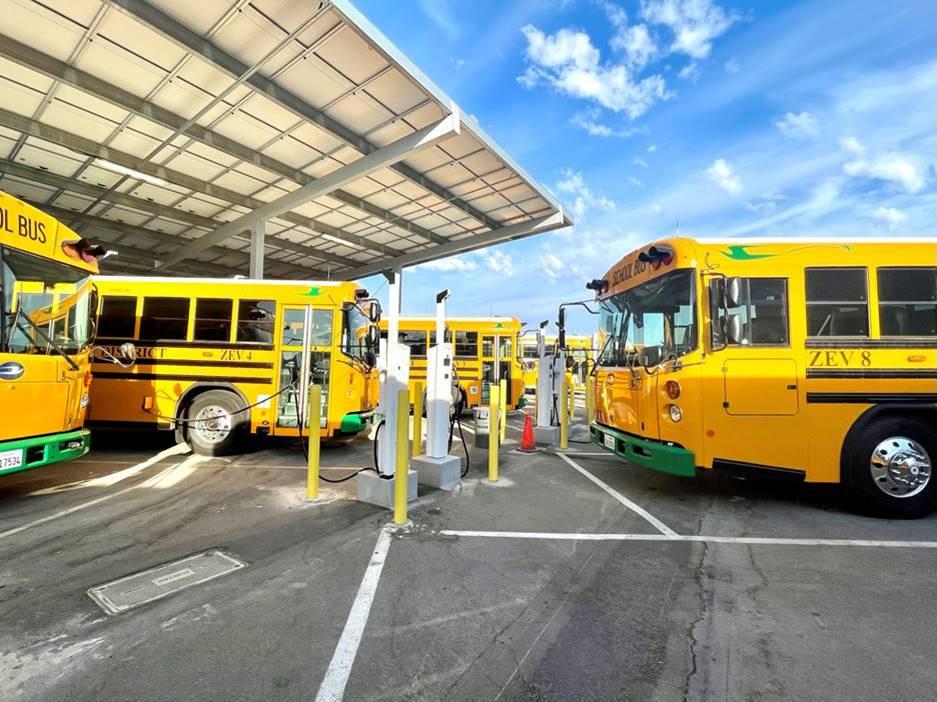Electrifying bus operations is a momentous milestone for school districts as they embark on a cleaner, more sustainable future for students, staff and the community. While most people will only see the change quite literally – through the lack of diesel exhaust, a new green bumper perhaps and a plug-in charger – school districts work for months and even years behind the scenes to turn this vision into reality. The first two parts of our Road to Electrification series focused on the planning and infrastructure building that are critical before a district’s new electric buses can pull into the parking lot. In this third and final installment, we dive into the logistics of operating an electric bus fleet and ensuring its performance delivers a valuable return on investment.
Charging and energy management
Having relied on fossil fuel-powered buses for decades, school districts may have a level of comfort in knowing exactly how often each bus needs to be refilled and roughly how much each trip to the gas station costs. Now, school districts face the task of managing the charging of multiple vehicles on shared chargers, against energy costs that may vary based on the time of day and night, or even season. This is where charging and energy management becomes essential. The Mobility House’s ChargePilot®, for example, creates and implements a charging schedule based on each bus’s assigned routes that ensures the buses are not only charged and ready to go when needed but also have enough charge to last the duration of the route. The driver simply has to plug the bus in when they finish their route, and ChargePilot® handles when charging starts and stops. ChargePilot® also optimizes charging schedules based on the local utility rate structure to avoid charging during peak hours, when rates are most expensive, and instead prioritize charging at the most cost-effective times. This significantly lowers monthly electricity bills, helping you save on operating expenses. In partnership with The Mobility House, Ocean View School District in California developed smart charging strategies that will save the district tens of thousands of dollars in the coming years in charging costs. Stockton Unified School District is also projected to save $500,000 over five years on their electricity bill by leveraging ChargePilot®.
Remote monitoring
Unfortunately, charging issues can happen. Worst case scenario: a charger stops working and the bus is out of commission for its assigned route. The remote, 24/7 monitoring of ChargePilot® immediately flags issues as they happen, and when applicable, can restart the charger without any service interruptions. With the system’s on-site hardwire, ChargePilot® will also continue working independently of internet connection, unlike other cloud-based solutions that turn off if the WiFi goes down.
Data collection
Since most school districts start their electrification journey with a specific goal in mind, it is important to track and demonstrate ongoing progress. Some districts are even required by grant agencies to report metrics like energy consumption and mileage to prove that the funding provided was in fact used to purchase and operate electric buses. California schools looking to receive Low Carbon Fuel Standard (LCFS) credits and monetize those also need to track electricity dispensed from their charging stations. Through the user-friendly, web-based dashboard of ChargePilot®, schools can easily collect these data points with one click, available 24/7.
Scalable and future-proof
A majority of electrification projects are rolled out in phases, and in some cases can take years to complete. Rather than going through the same extended “plan, build and operate” process every time you’re ready to add more electric buses to your fleet or change out equipment, you can operate comfortably knowing that ChargePilot® is interoperable and modular – meaning you can continue to expand your fleet without adding a new controller or worrying about manufacturer compatibility. When the time comes, the ChargePilot® system is even built with vehicle-to-grid (V2G) capabilities. Given the large amount of time school buses are parked unused, being able to intelligently connect the bus’ battery to the power grid can bring much needed grid support to the school and the community.
Connect with The Mobility House
Learn more about The Mobility House’s charging and energy management system, ChargePilot®, and contact us today for your free demo or consultation with an electric school bus smart charging expert.
